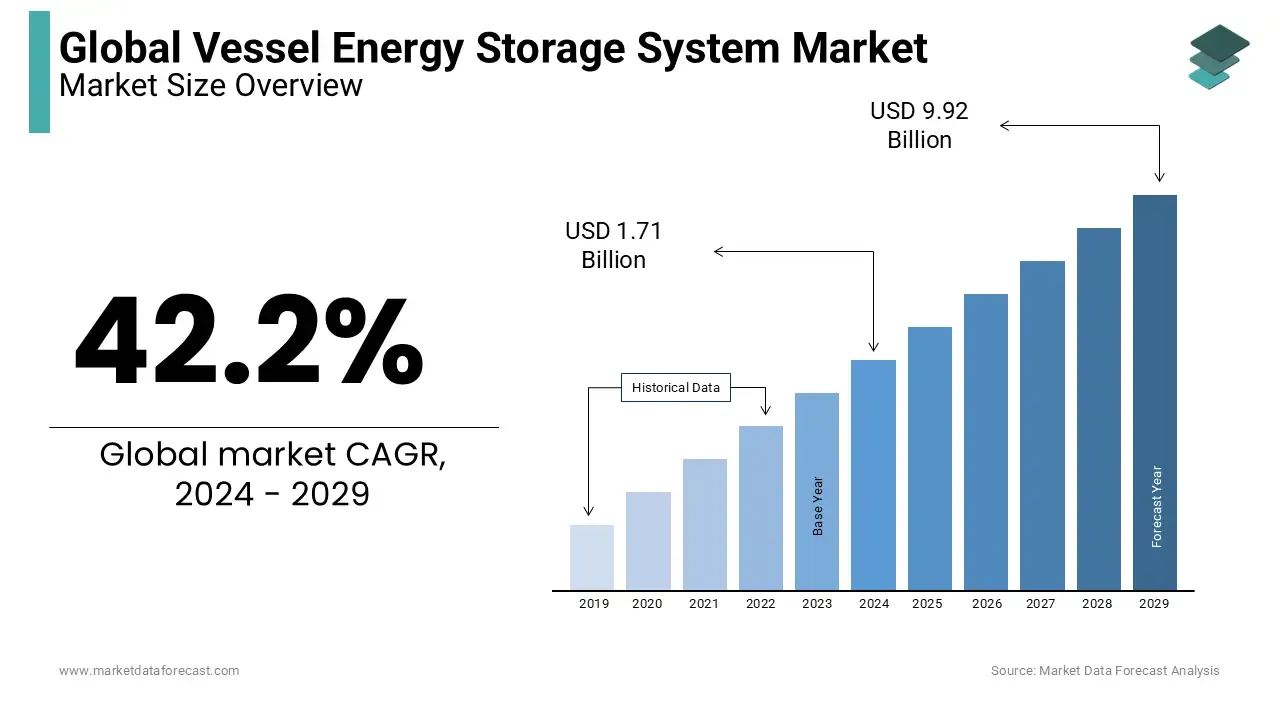
Inquiry
How to Choose the Right Marine Energy Storage System for Your Vessel
In an era where the maritime industry faces tightening emissions regulations and rising fuel costs, selecting the right Marine Energy Storage System (ESS) has become a mission-critical decision.
According to the Market Data Forecast Report, the global vessel energy storage system market is projected to grow from USD 1.48 billion in 2023 to USD 7.54 billion by 2032, registering a CAGR of 42.2% from 2024 to 2032. This rapid growth underscores the increasing adoption of hybrid and fully electric vessels as shipowners seek cost savings, regulatory compliance, and sustainability benefits.
Vessels equipped with advanced ESS solutions can reduce fuel consumption by up to 30% (DNV 2023 Report) while significantly cutting CO₂ emissions – a key step toward achieving IMO 2050 goals.
This comprehensive guide will walk you through five essential selection criteria, reveal costly mistakes to avoid, and explain why ACE Battery's LFP-based Marine Energy Storage Systems are the ideal choice for modern hybrid and electric vessels worldwide.
How to Choose the Right Marine Energy Storage System for Your Vessel?
Battery Chemistry: LFP vs. Lithium-Ion vs. Lead-Acid
Lithium Iron Phosphate (LFP)
LFP batteries are considered the best choice for marine energy storage due to their high safety, long cycle life, and thermal stability. Unlike other lithium-ion chemistries, LFP batteries are highly resistant to thermal runaway, which reduces the risk of fire—a crucial safety factor for vessels operating in remote or extreme environments.
Additionally, LFP batteries have a lifespan of 3,000–5,000 cycles, significantly longer than traditional lithium-ion (NMC, NCA) and lead-acid batteries. They also maintain a consistent discharge rate, ensuring reliable power for marine electronics, propulsion, and auxiliary systems. Unlike lead-acid batteries, which degrade faster in marine conditions, LFP batteries handle deep discharges without compromising performance.
Another major advantage is efficiency. LFP batteries typically operate at 90–98% efficiency, meaning more of the stored energy is actually used. In contrast, lead-acid batteries operate at only 70–80% efficiency, leading to energy losses. Plus, LFP batteries charge faster, allowing vessels to optimize energy use from renewable sources like solar panels or wind turbines.
Lithium-Ion (NMC, NCA)
These batteries offer higher energy density, making them suitable for applications where space and weight are critical. However, they require advanced safety mechanisms to prevent overheating and potential thermal runaway. NMC and NCA batteries also have a shorter lifespan than LFP, especially under high-stress conditions like deep cycling and exposure to marine environments.
Lead-Acid
A budget-friendly option, but it comes with significant trade-offs. Lead-acid batteries are heavy, bulky, and have a short lifespan (500–1,000 cycles). They also require regular maintenance and have lower efficiency, meaning more energy is wasted. In marine settings, their poor depth-of-discharge (DoD) capability means frequent recharging is needed, making them less practical for long-term use.
By choosing Lithium Iron Phosphate (LFP) for marine energy storage, vessel owners benefit from enhanced safety, longevity, efficiency, and reliability, making it the superior choice over other battery types.
| Battery Type | Energy Density (Wh/kg) | Cycle Life | Thermal Stability | Safety | Maintenance |
| LFP | 120-160 | 8,000+ | Excellent (518°C) | High | Low |
| NMC | 150-220 | 3,000 | Moderate | Moderate | Moderate |
| Lead-Acid | 30-50 | 500 | Poor (160°C) | Low | High |
Capacity & Power Needs
Assessing Your Vessel’s Energy Requirements
Before selecting a marine battery system, it's crucial to determine your vessel’s energy consumption patterns. Calculate the total daily power demand in kilowatt-hours (kWh) by evaluating the energy requirements of propulsion motors, navigation systems, HVAC units, refrigeration, communication equipment, and auxiliary loads.
Considering Peak Power Demand
In addition to total energy consumption, you need to consider peak power demand. This refers to the highest amount of power required at any given time, especially during propulsion, acceleration, or running multiple electrical systems simultaneously. If your marine battery system cannot handle these peaks, you may experience power shortages or battery stress, which can shorten the lifespan of your energy storage system.
Scalability & Future Expansion
A modular energy storage system allows for future upgrades without requiring a complete replacement. This is particularly important for commercial vessels and electric ferries, where power demands may increase due to additional equipment or longer operational hours. Investing in a scalable marine battery solution ensures your vessel remains adaptable to future energy needs.
Safety Features for Marine ESS
Fire Resistance & Thermal Management
Marine environments pose unique safety challenges, making it essential to invest in fire-resistant and thermally stable battery systems. Advanced cooling systems—either liquid-cooled or air-cooled—help regulate battery temperature and prevent overheating. Additionally, marine batteries should be housed in flame-retardant enclosures to reduce the risk of fire spreading.
Battery Management System (BMS)
A high-quality Battery Management System (BMS) is critical for ensuring the safe operation of lithium marine batteries. The BMS continuously monitors voltage, temperature, and charge levels, preventing overcharging, overheating, and deep discharges. This extends battery life and reduces the risk of electrical failures at sea.
Redundancy & Fail-Safes
For marine energy storage systems, having built-in fail-safes is essential. This includes backup battery modules, automatic shutdown mechanisms, and alarm notifications in case of abnormal temperature spikes or voltage fluctuations.
Modularity & Scalability
Flexible Configurations for Different Vessel Types
A modular marine ESS allows vessel operators to increase battery capacity without replacing the entire system. This flexibility is especially useful for vessels transitioning from hybrid power to fully electric propulsion.
Integration with Renewable Energy
Many modern marine battery solutions integrate with solar panels, wind turbines, or shore power charging stations, improving energy efficiency and reducing fuel dependency. This is particularly beneficial for sustainable marine tourism, research vessels, and off-grid applications.
Lifecycle & Maintenance
Long-Term Cost Savings with High Cycle Life
The lifespan of a marine battery system directly affects operating costs. LFP batteries last up to 15 years, significantly reducing battery replacement expenses compared to lead-acid batteries, which require frequent replacements.
Low-Maintenance Battery Solutions
LFP and lithium-ion batteries require minimal maintenance, whereas lead-acid batteries demand regular electrolyte refilling, corrosion prevention, and ventilation checks. Investing in a low-maintenance battery system reduces downtime and operational costs.
Remote Monitoring & Diagnostics
Advanced marine battery monitoring systems allow operators to track battery health, efficiency, and performance in real time. Predictive analytics can identify potential faults before they lead to system failures, ensuring uninterrupted power at sea.
Certifications & Compliance
Ensure the ESS meets IMO (International Maritime Organization) and DNV (Det Norske Veritas) safety standards.
Check for additional certifications such as ABS (American Bureau of Shipping) or IEC (International Electrotechnical Commission) compliance.
Compliance with environmental regulations to support sustainability initiatives.
Why ACE Battery’s Marine ESS Is the Right Choice
Customized Energy Storage Solutions for All Vessel Types
ACE Battery provides customized marine energy storage solutions designed to meet the unique demands of various vessels, including electric ferries, hybrid fishing boats, cargo ships, luxury yachts, and offshore support vessels. Whether your vessel operates on fully electric propulsion or a hybrid marine power system, ACE Battery’s modular ESS configurations ensure seamless integration. By offering scalable battery storage solutions, shipowners can optimize their vessel’s energy efficiency while preparing for future power demands.
High-Energy Density, Long Lifespan, and Certified Safety Standards
ACE Battery’s Lithium Iron Phosphate (LFP) energy storage system delivers high energy density, exceptional cycle life, and superior efficiency, making it ideal for marine electrification. With a lifespan of 3,000–5,000 cycles, these marine-grade LFP batteries significantly reduce replacement and maintenance costs, ensuring long-term savings. Additionally, ACE Battery’s marine ESS solutions comply with international safety and environmental certifications, which guarantee that the system meets strict maritime safety standards, providing reliable and sustainable energy storage for marine applications.
AI-Driven Smart BMS for Real-Time Monitoring and Optimization
ACE Battery integrates an advanced AI-powered Battery Management System (BMS) to enhance battery performance, safety, and longevity. The real-time monitoring system enables predictive maintenance, reducing the risk of unexpected failures and minimizing vessel downtime. Fleet operators can remotely track battery health, energy consumption, and system efficiency, ensuring optimized charging and discharging cycles that extend battery life. With smart marine energy storage solutions, shipowners can maximize operational efficiency while reducing fuel consumption and emissions, supporting the transition to sustainable marine transportation.
Common Mistakes to Avoid When Choosing a Marine ESS
1. Overspending on Capacity – Bigger Isn’t Always Better
Many vessel operators assume that a larger battery bank will automatically lead to better performance and reliability. However, oversizing your ESS can result in unnecessary costs, increased weight, and inefficient energy usage. Instead of buying the biggest system available, conduct a thorough energy audit to determine the optimal battery capacity based on your vessel’s actual daily energy consumption, peak power needs, and operational profile.
💡 How to avoid this mistake: Work with marine energy experts to accurately size your ESS based on your specific vessel type, operational hours, and onboard systems.
2. Ignoring Safety Certifications – Non-Certified Batteries Can Be Risky
Using a non-certified marine battery system can jeopardize crew safety, lead to regulatory fines, and even void insurance coverage. The marine industry has strict safety standards to prevent fire hazards, thermal runaway, and system failures at sea. If a battery system lacks certifications from IMO (International Maritime Organization), DNV (Det Norske Veritas), ABS (American Bureau of Shipping), or IEC (International Electrotechnical Commission), it may not meet the required safety standards for marine environments.
💡 How to avoid this mistake: Always choose a DNV and IMO-certified marine ESS to comply with industry safety regulations and avoid legal issues.
3. Neglecting Modularity – A Non-Scalable System Limits Future Expansion
A rigid energy storage system that lacks modularity and scalability can become obsolete as your vessel's energy demands change. If your marine ESS cannot be expanded or upgraded without a complete system overhaul, it may lead to costly replacements in the future.
💡 How to avoid this mistake: Opt for a modular marine battery system that allows seamless expansion to accommodate future increases in energy demand.
Conclusion
Choosing the right Marine ESS is essential for operational efficiency, cost savings, and regulatory compliance. ACE Battery offers industry-leading solutions with advanced safety features, modular scalability, and smart energy management. Upgrade your vessel today with ACE Battery’s Marine Energy Storage System to future-proof your fleet.
Contact us for a customized consultation and find the perfect Marine ESS solution for your vessel!
Our expert will reach you out if you have any questions!

